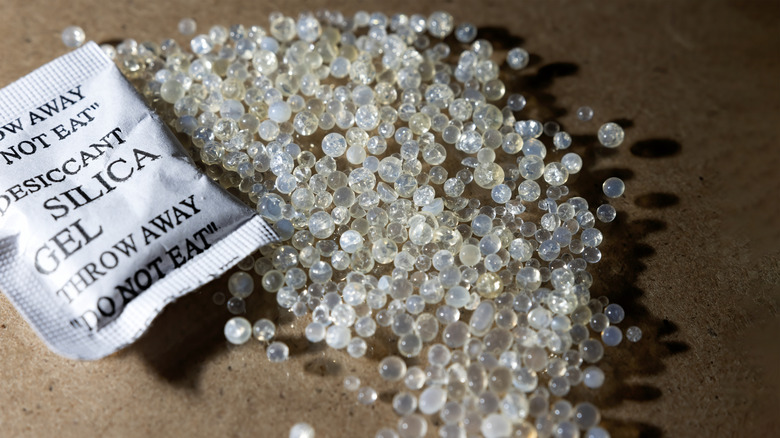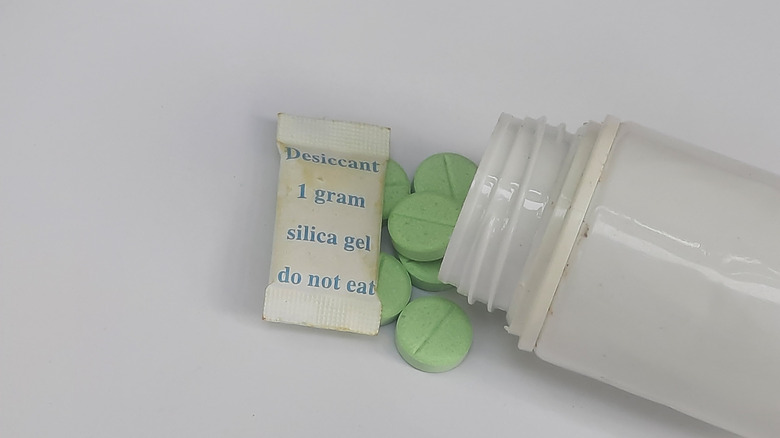What Would Happen If You Accidentally Ate A Silica Gel Packet?
If it wasn't already clear from the words "do not eat" that often adorn the paper packaging, silica gel packets are definitely not for human consumption. You've almost certainly seen the absorbent pads in meat packaging or other forms of the device. They show up in all sorts of purchases from electronics to shoes as manufacturers use them to absorb moisture and prevent liquids from ruining their goods. If you rip a package open, the gel itself looks like a spoonful of small, rubbery beads. Those beads do slightly resemble tiny little gummy candies although they're typically clear, not colorful. While most adults are probably wise enough not to try to snack on them (although some people have suggested that they could be mistaken for sugar or salt packets), it's definitely the kind of thing that a kid might want to stick in their mouth and possibly swallow. In fact, in 2009 alone, the American Association of Poison Control Centers had 38,000 reports of people eating the gel with the vast majority being kids under six years of age.
Perhaps surprisingly, silica gel actually isn't poisonous. Despite the "do not eat" warning, it's non-toxic. You likely wouldn't need a trip to the hospital should you ingest some. The packets are definitely a choking hazard for children which is arguably the bigger danger.
What to do if someone eats silica gel
The beads in silica gel packets are a substance called silicon dioxide. In less scientific terms, they're basically a form of sand. Similar to what would happen if you ate sand, silica gel is unlikely to do you any real harm. The silica gel will simply pass through your digestive system. In large amounts, it may cause damage to your intestines, although this would presumably require eating more than one small package of the stuff. If someone ate silica gel and feels okay, it should be fine to just leave them be without calling emergency services. You may want to call a poison control center to be safe, though. Giving them water to help the gel move through the body is also a good idea. If someone is choking, you should call 911.
In rare cases, silica gel comes with a cobalt chloride coating which is a toxic substance that may cause vomiting and nausea. The gel beads will appear either dark blue or pink if this is the case although you're unlikely to encounter this as this type of gel isn't generally used for consumer products. If this happens, give the person water and call a poison control center.
If they aren't for eating, why do they come in some food packages?
It's not uncommon to find silica gel packages in certain food products. For example, beef jerky or dry snack foods like popular Corn Nuts snacks. It's also common in bottles of medications or vitamins. It may seem odd to put a substance with a "do not eat" label right alongside food but it serves a useful purpose. Silica gel is an ultra-porous desiccant and is therefore a machine at soaking up moisture from its surroundings. In certain foods, it's necessary to keep the food as dry as possible to prevent mold or other spoilage. The gel is also helpful if water vapor seeps into a container as the vapor can condense and ruin the contents. For this reason, silica gel packets can also be helpful in damp environments like a gym bag, helping dry it out and preventing gross smells from building up. Another key reason why silica gel appears alongside food is the fact that it's non-toxic. It's not something you want to eat but manufacturers know that there's relatively minimal danger in the event that someone does munch on a few of those beads.


